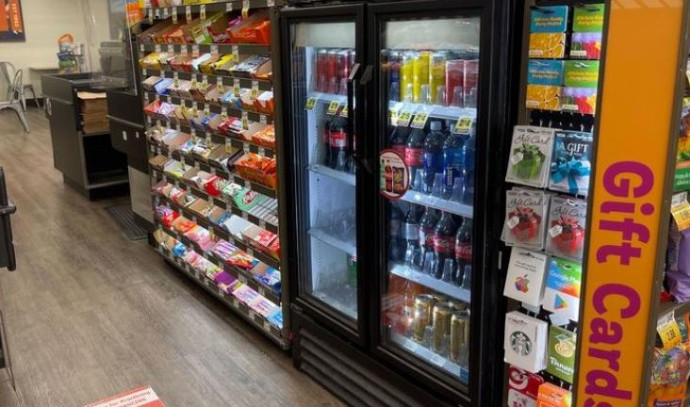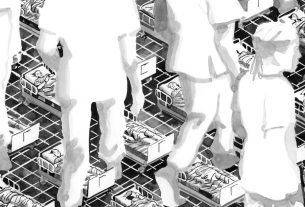|
Getting your Trinity Audio player ready...
|
There’s a good reason why, when you’re waiting with your shopping cart at your supermarket’s checkout counter, you are unlikely to see nuts, seeds, vegetables and fruits – but candy, salty snacks, soft drinks, ice cream and other junk food. Children demand that parents put these in the cart, and adults snatch them up for themselves as impulse purchases.
Fully 70% of foods and beverages at checkout counters are unhealthy, according to researchers at the University of California at Davis. For snack-sized options, an even higher proportion 89% – are harmful to health. They examined what was set up at checkout counters at 102 supermarkets and grocery stores.
Most food, beverage options consist of candy, sugar-sweetened beverages and more
A study just published in the journal Current Developments in Nutrition under the title “Food and Beverage Environments at Store Checkouts in California: Mostly Unhealthy Products” suggests most food and beverage options at checkout consist of candy (31%), sugar-sweetened beverages (11%), salty snacks (9%) and sweets (6%).
Healthy items were far less common. Water represented 3% of food and beverage options, followed by nuts and seeds (2%), fruits and vegetables (1%), legumes (0.1%) and milk (0.02%).
Beverages meeting healthy checkout standards include those with no added sugars and no artificial sweeteners; artificial sweeteners were inclusive of all nonnutritive sweeteners. Foods meeting healthy checkout standards included those with less than five grams of added sugars and less than 200 milligrams of sodium per labeled serving in chewing gum and mints with no added sugars, fruit, vegetables, nuts, seeds, legumes, yogurt or cheese, and whole grains. Seeds additionally included any product whose first ingredient was cacao, including some dark chocolates. Products within the permissible added-sugar and sodium limits were further classified by their first ingredient, such as fruit.
Food and beverage companies consider the checkout lane to be prime real estate for their products, said Prof. Jennifer Falbe of the university’s human ecology department and the lead author of the study. The checkout is the only place in a store where every customer must pass through, and it’s known to contribute to impulse purchases, she said.
“The checkout lane has been designed this way through marketing agreements in which food and beverage companies pay stores to place their products — which are mostly unhealthful — at checkout,” Falbe said.
Researchers analyzed the checkout lanes in the cities of Davis, Sacramento, Oakland and Berkeley. Stores included supermarkets, grocery stores, specialty food stores, drugstores, dollar stores and mass merchandisers.
The evaluation was conducted in February 2021, right before an ordinance in the city of Berkeley went into effect requiring large food stores to offer more nutritious offerings at the checkout. Berkeley became the first city in the US. to implement a healthy checkout policy. Israel has no such requirements.
Falbe said Berkeley’s policy is consistent with federal dietary guidelines that emphasize consuming nutrient-dense foods such as fruits, vegetables, whole grains, nuts and seeds and cutting back on sodium and added sugars.
“The majority of Americans exceed the daily recommended limits for added-sugar and sodium intake,” Falbe said. “Berkeley’s checkout policy allows certain food and beverage categories at checkout such as dairy products, unsweetened beverages, fruits, vegetables, nuts, seeds and legumes and sets limits on the amount of added sugar and sodium in a product at checkout. Shoppers can still get candy from the candy aisle, but it won’t be forced on them at checkout.”
In the study, Berkeley’s policy was used as a benchmark to help measure the healthfulness of products at store checkouts. The researchers found that the percentage of food and beverage options that met healthy checkout standards was highest in chain specialty food stores, chain supermarkets and chain mass merchandisers. It was lowest in chain dollar stores and independent grocery stores, which are more common in disadvantaged neighborhoods.
Checkout areas can strongly influence consumer choices. Falbe said she hoped that her findings will be used to help improve the food environment for people across all neighborhoods.
“There’s an opportunity here for checkouts to offer more choice by expanding access to healthier options,” Falbe said. “Currently, consumers lack choices at the checkout.”



